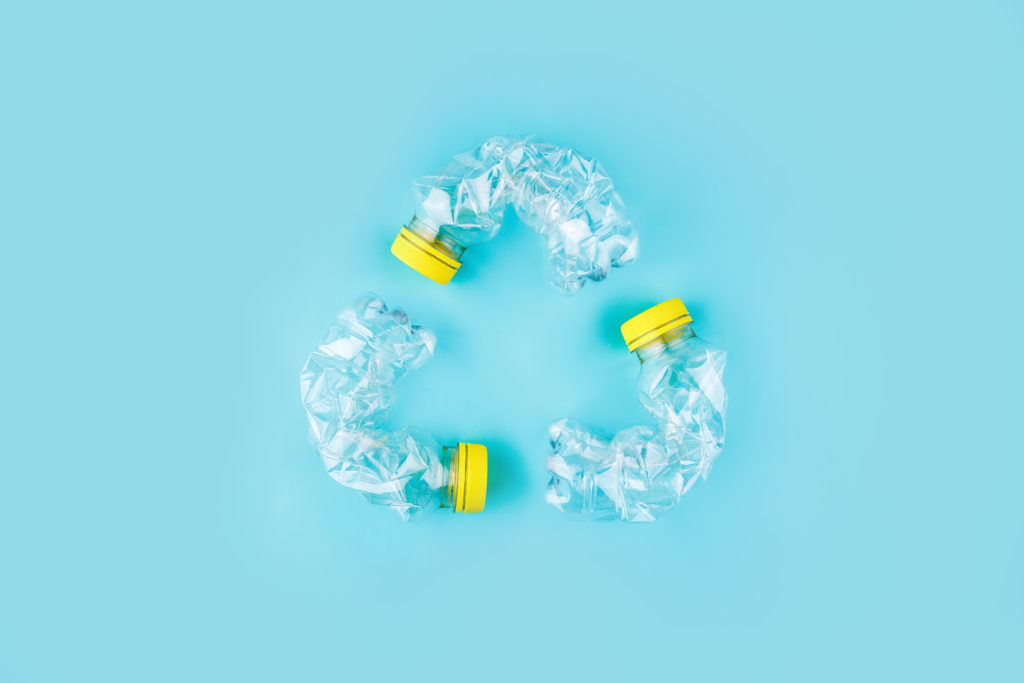Plastic is everywhere—food packaging, furniture, and children’s toys—making it a defining material of the modern world. According to Greenpeace, humanity produced approximately 9.2 billion tonnes of this material as of the 1950s. In 2019, that number was 368 million tonnes, and only 9% was recycled.
This low recycling rate highlights significant challenges, from inefficient systems to the complexity of recycling different types of plastics. Despite this, technological advancements and growing awareness pave the way for more effective solutions. Communities, businesses, and governments are working with RTS and institutions to address the problem and develop better recycling methods.
Let’s explore how to recycle plastics and how we can contribute to the evolution toward a sustainable future.
Why is Plastic Recycling Important, and What are the Challenges Faced by the Industry?
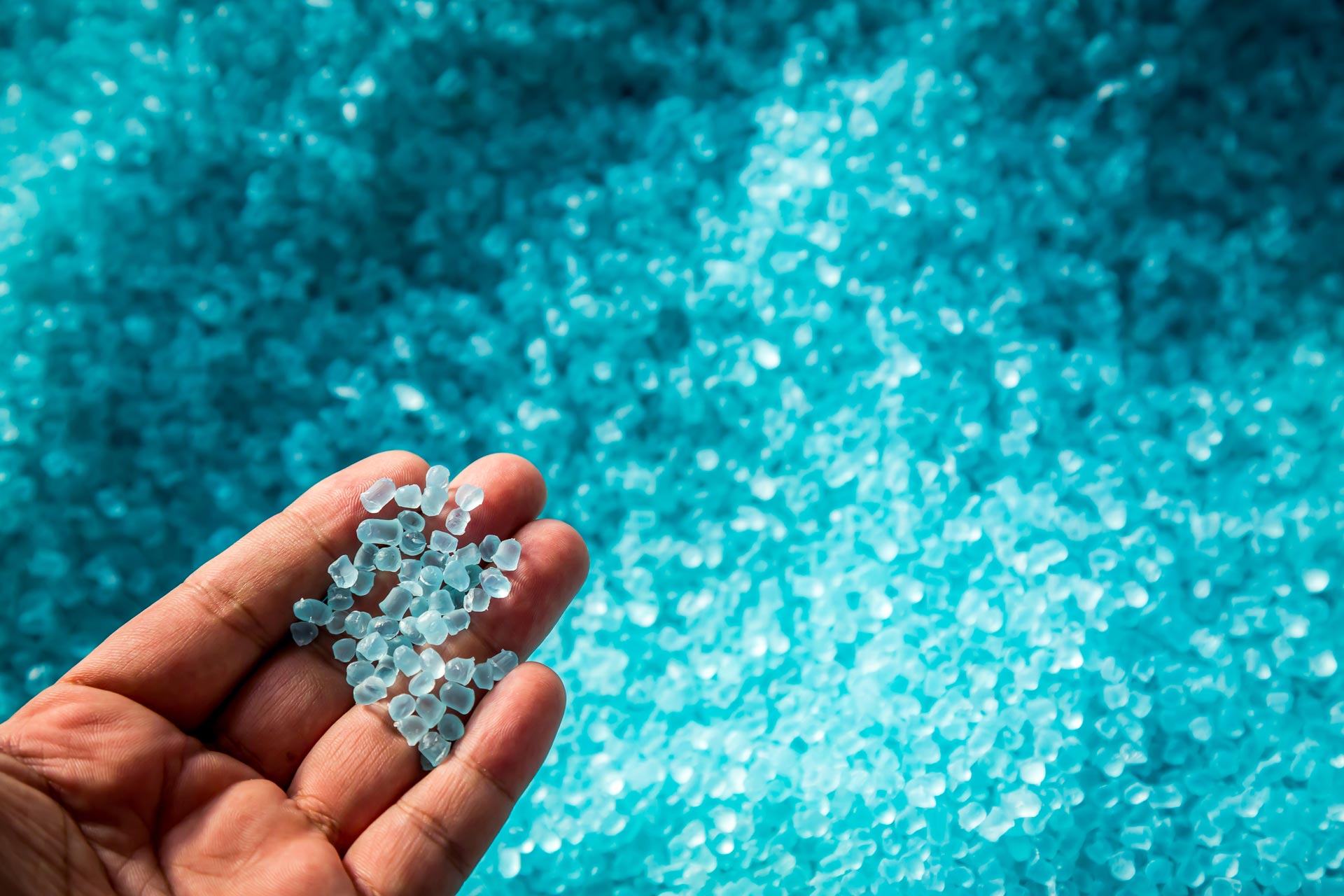 Plastic recycling is vital in managing waste and creating a more sustainable future. It supports a circular economy, which reduces waste and reuses materials. Plastic waste has severe impacts on our environment, health, and economy. For example, microplastics pollute our oceans and even enter the food we eat. In addition, plastic pollution costs industries like fishing and tourism an estimated $2.5 trillion annually. These facts highlight just how urgent it is to address this problem.
Plastic recycling is vital in managing waste and creating a more sustainable future. It supports a circular economy, which reduces waste and reuses materials. Plastic waste has severe impacts on our environment, health, and economy. For example, microplastics pollute our oceans and even enter the food we eat. In addition, plastic pollution costs industries like fishing and tourism an estimated $2.5 trillion annually. These facts highlight just how urgent it is to address this problem.
Still, solving the plastic waste crisis isn’t easy. Many people don’t fully understand how big the problem is. Efforts to tackle it have often faced resistance, especially from industries that profit from plastic production.
While concerns about plastic waste were first raised in the 1960s, progress has been slow. Thankfully, things are starting to change with RTS at the forefront. We have a webinar on compostable plastics, which you can download to spread awareness of the subject.
Because of such initiatives, more people and businesses are learning about the issue, recycling plastic, and making sustainable choices. This growing awareness gives hope for a cleaner, healthier planet.
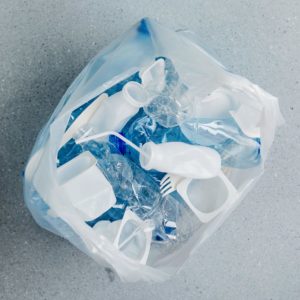 Today, consumers and businesses are trying to recycle more, but many lack the knowledge to do it correctly. This often leads to problems like contamination. For instance, mixing non-recyclable plastics with recyclable ones or attempting to recycle plastics with food residue, chemicals, or adhesives can disrupt the recycling process. These mistakes often send plastics to landfills instead of being recycled.
Today, consumers and businesses are trying to recycle more, but many lack the knowledge to do it correctly. This often leads to problems like contamination. For instance, mixing non-recyclable plastics with recyclable ones or attempting to recycle plastics with food residue, chemicals, or adhesives can disrupt the recycling process. These mistakes often send plastics to landfills instead of being recycled.
Another challenge lies in the products themselves. Items like water bottles, usually made from a single type of plastic (such as PETE), are easier to recycle. However, many products are made from a combination of plastics or a mix of plastics and other materials like metal or wood. These mixed-material items cannot be processed in most recycling facilities and often become waste.
Despite these challenges, plastic recycling has improved significantly in recent years. The process can now be broken down into six steps, making it more efficient and effective.
The Plastic Recycling Process Steps
Just like any other waste RTS deals with, we have a process for recycling plastics. Those steps are as follows:
 1. Collection and Distribution
1. Collection and Distribution
In this step, collectors from the government or private companies gather all post-consumer materials from establishments like homes, schools, and other institutions.
 2. Sorting and Categorizing
2. Sorting and Categorizing
Sorting entails grouping plastics into their respective types. Beyond chemical composition, sorting is also done by color, thickness, and usage. This step can be done manually or by machines at recycling plants.
 3. Washing
3. Washing
Washing is the process of removing all the impurities that may impede the following processes. Here, product labels, adhesives, and food residue are removed.
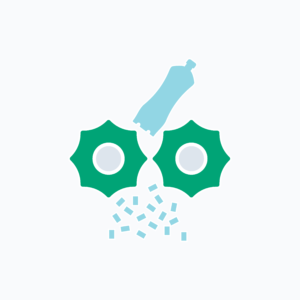 4. Shredding
4. Shredding
After washing comes shredding, which is basically breaking down the sorted and washed plastics into smaller-sized pieces. In this state, they might be used as additives within asphalt or sold as a raw material. Shredding also allows the removal of more impurities like metals.
 5. Identification and Separation
5. Identification and Separation
Here, plastics are tested for their class and quality. So, they are first segregated based on density, where testing is done by floatation on water. The next process is called air classification, where plastics are categorized based on thickness. Air classification occurs in a wind tunnel—thinner pieces float while thicker ones stay at the bottom.
 6. Extruding and Compounding
6. Extruding and Compounding
The final stage of plastic recycling is when the plastics are crushed and melted to form pallets called nurdles. After they become nurdles, they are transformed to take a new shape to make a new product. Please note that different classes of plastics might need specific plants to finalize this step.
Understanding Recycling Labels
Recycling labels on plastic packaging are designed to help people sort and recycle their waste correctly. However, these symbols can often be confusing. Knowing what they mean can significantly affect how effectively we recycle. Let’s break down some of the most common labels and what they tell us about plastic packaging.
 The Mobius Loop (Recycle Symbol)
The Mobius Loop (Recycle Symbol)
The Mobius Loop is a triangle made of three arrows. If you see this symbol, it means the item is recyclable. However, it doesn’t guarantee that it can be recycled everywhere. Recycling programs vary by location, so confirm with your local recycling center.
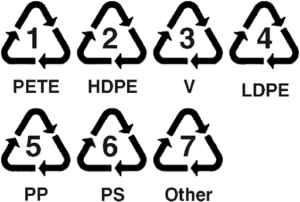 The Resin Identification Code (Numbers Inside the Triangle)
The Resin Identification Code (Numbers Inside the Triangle)
The triangle symbol often includes a number from 1 to 7. This is called the Resin Identification Code, which tells you the type of plastic used.
 Green Dot
Green Dot
The Green Dot doesn’t mean the item is recyclable. Instead, it shows that the manufacturer contributes to recycling programs.
Widely Recycled, Check Locally, Not Recyclable
Some packaging includes phrases like “Widely Recycled” or “Check Locally.” These are guidelines about whether the item can be recycled in most places or only in specific areas.
What You Can Do
Understanding these labels helps you sort waste correctly and avoid contamination in recycling bins. When in doubt, check local guidelines or ask your recycling provider. Following these simple steps contributes to a cleaner, more sustainable future.
The Different Types of Plastic
Plastics are categorized into seven classes. You may have already seen these symbols on products but perhaps never paid attention. While they look like the “recycling symbol,” they indicate resin type, with some representing material that is not recyclable.
Number 1: PETE (or PET) – Polyethylene Terephthalate
One of the most common types of plastic is the resin used to manufacture products such as food containers and plastic bottles for water or soft drinks. PETE (sometimes referred to as PET) is widely recycled.
Number 2: HDPE – High-Density Polyethylene
More rigid than PETE, this type of plastic is used in what will appear to be “sturdier” products such as detergent bottles, food and drink storage, bottle caps, some thicker shopping bags, and non-single-use plastic products like toys, helmets, and piping. Again, this type of plastic is widely recycled.
Number 3: PVC – Polyvinyl Chloride
PVC is considered one of the most versatile and common plastic types. It is used for applications such as water and waste pipes (due to its resistance to chemical and biological damage), flooring, signage, furniture, and more. While some methods have been developed to recycle PVC, it is not common and rarely found in general plastic collections. This is in large part due to its toxicity when processed.
Number 4: LDPE – Low-Density Polyethylene
While not as strong as HDPE, this low-density plastic is highly resilient and used across various products such as containers, playground fixtures, and plastic trash bags. This resin type is recyclable, but many products (such as plastic bags) can be excluded since they pose the risk of clogging machinery and are deemed not worthwhile to recycle.
Number 5: PP – Polypropylene
Commonly used in injection molding, PP is found in products from bottle caps to surgical tools and clothing. While it is recyclable, processing centers often reject it due to the problems it poses, making the rate at which it is recycled far lower than that of other plastics.
Number 6: PS – Polystyrene
This plastic is frequently used as disposable plastic containers for food, insulated containers, and packaging materials. Despite its abundance, PS is rarely recycled because it is not cost-effective (in its most common form, expanded polystyrene or styrofoam, which is 95% air) and requires more energy than it saves to recycle.
Number 7: Other
This category encompasses everything else, including combinations of the previous six and other lesser-used plastics. It also includes non-petrochemical plastics such as new plastics, polymers, and bioplastics. As such, anything marked with a number 7 is generally not included in plastic recycling but may have other waste solutions.
Recycling Tips and Best Practices
Recycling plastic is a crucial way to protect the environment and reduce waste. However, to recycle effectively, it’s helpful to follow a few simple tips and best practices. Here’s how to make a difference while keeping things easy and efficient.
Know Your Local Rules
Some areas accept all types of plastic, while others have specific guidelines. Check your local government’s website or recycling center to learn which plastics are accepted. Look for numbers inside the recycling triangle symbol on plastic items—this will help you know what can and cannot be recycled.
Clean Before You Recycle
Always rinse plastic containers before recycling them. Leftover food or liquids can contaminate an entire batch of recyclables, making them unusable.
Avoid Plastic Bags in Recycling Bins
Many recycling facilities cannot process plastic bags. Instead of placing them in your recycling bin, take them to designated collection points.
Don’t Wish-Cycle
Wish-cycling is when you toss an item into the recycling bin, hoping it can be recycled, even if unsure. This can create problems for recycling facilities and increase waste. When in doubt, check first.
Recycle on the Go
When you’re out and about, look for recycling bins in public places like parks, malls, or offices. If you can’t find one, bring your plastic items home and recycle them properly.
Reuse When Possible
Before recycling, consider ways to reuse plastic items. For example, empty containers can be used for storage, and plastic bags can serve as liners or carriers. Reusing items reduces the need for new plastics and helps the environment.
Buy Less Plastic
Choose products with minimal or no plastic packaging, and carry reusable bags, bottles, and utensils whenever possible.
Spread Awareness
Talk to friends and family about the importance of recycling. Share tips and encourage them to follow local guidelines. The more people recycle correctly, the more significant the impact we can make together.
Store Drop-Off Recycling — A Simple Way to Recycle Plastics
Store drop-off recycling is an easy and convenient way to recycle certain types of plastics that aren’t accepted in most curbside recycling programs. Many everyday items, like plastic bags and wraps, can’t go in your household recycling bin because they can get tangled in sorting machines.
These items are typically made of soft plastic, like polyethylene, which can be recycled into new products like park benches, decking, or even new bags. Always check the labels or ask at the store to ensure your items are accepted.
What Items Qualify for Store Drop-Off Recycling?
Not all plastics qualify for store drop-off recycling, so it’s important to know what’s accepted. Common items include:
- Plastic shopping bags
- Bread bags
- Dry cleaning bags (clean and dry)
- Bubble wrap
- Plastic overwrap from paper products like toilet paper or bottled water
- Zipper-style storage bags (with the zippers removed)
How Does the Process Work?
- Collect Your Plastics — Start by collecting the soft plastics you want to recycle. Ensure they’re clean and dry, as dirty or wet items can contaminate recycling.
- Find a Drop-Off Location — Many grocery stores, retail chains, and big-box stores have collection bins for plastic bags and wraps, usually near the entrance or customer service area.
- Drop Them Off — Once you’ve gathered your recyclables, drop them in the designated bin. There’s no need to sort them further—the recycling facility will process them together.
- Recycling and Repurposing —The plastics are sent to specialized recycling centers after collection. There, they’re cleaned, shredded, and melted down into pellets, then used to make new products.
Why Store Drop-Off Recycling Matters
This type of recycling prevents soft plastics from ending up in landfills or oceans, where they can harm wildlife and pollute the environment. Since soft plastics can’t be processed in standard curbside systems, store drop-off programs fill an essential gap in recycling efforts.
By participating in in-store drop-off recycling, you’re helping to reduce waste, conserve resources, and support a cleaner planet. It’s a small step that makes a big difference and is easy for anyone.
Download this blog to share
Plastic recycling might seem impossible, but it can be done. We have seen it happen and still continue to put our best foot forward to keep it going. If we can recycle e-waste, paper, and batteries, it is also possible with plastics.
But we have to all be in this. So, pick up all the plastics in your surroundings and dispose of them well for proper recycling. Another way; download this blog and share it. Simple and effective does the trick.

Sources
Greenpeace Africa. (n.d.). Retrieved December 5, 2024, from https://www.greenpeace.org/africa/en/blogs/54418/30-plastic-facts/
National Geographic. (2017, July 19). A whopping 91% of plastic isn’t recycled. Retrieved December 5, 2024, from https://www.nationalgeographic.com/news/2017/07/plastic-produced-recycling-waste-ocean-trash-debris-environment/
RTS. (n.d.). Circular economy guide. Retrieved December 5, 2024, from https://www.rts.com/resources/guides/circular-economy/
The Guardian. (2020, August 17). Microplastic particles discovered in human organs. Retrieved December 5, 2024, from https://www.theguardian.com/environment/2020/aug/17/microplastic-particles-discovered-in-human-organs
The Guardian. (2019, April 4). Marine plastic pollution costs the world up to $25bn a year. Retrieved December 5, 2024, from https://www.theguardian.com/global-development/2019/apr/04/marine-plastic-pollution-costs-the-world-up-to-25bn-a-year-researchers-find
RTS. (n.d.). Compostable plastics: They’re not as simple as you think. Retrieved December 5, 2024, from https://www.rts.com/webinars/compostable-plastics-theyre-not-as-simple-as-you-think/
The Guardian. (2018, November 13). The plastic backlash: What’s behind our sudden rage? Retrieved December 5, 2024, from https://www.theguardian.com/environment/2018/nov/13/the-plastic-backlash-whats-behind-our-sudden-rage
Zero Waste. (n.d.). What is zero waste and who started it? Retrieved December 5, 2024, from https://www.zerowaste.com/blog/what-is-it-who-started-the-zero-waste-movement/
RTS. (n.d.). What is recycling contamination and how you can help. Retrieved December 5, 2024, from https://www.rts.com/blog/what-is-recycling-contamination-and-how-you-can-help/
U.S. Environmental Protection Agency. (n.d.). Frequent questions on recycling. Retrieved December 5, 2024, from https://www.epa.gov/recycle/frequent-questions-recycling
RTS. (n.d.). The state of recycling today. Retrieved December 5, 2024, from https://www.rts.com/resources/guides/the-state-of-recycling-today/
London Recycles. (n.d.). Recycling symbols explained. Retrieved December 5, 2024, from https://londonrecycles.co.uk/recycling-101/recycling-symbols-explained/
Woodford Recycling. (n.d.). Everything you didn’t know about the Mobius Loop. Retrieved December 5, 2024, from https://www.woodfordrecycling.co.uk/news/everything-you-didnt-know-about-the-mobius-loop/
RTS. (n.d.). Plastic bottle recycling facts. Retrieved December 5, 2024, from https://www.rts.com/blog/plastic-bottle-recycling-facts/
Bloomberg. (2019, September 25). Polypropylene plastic can finally be recycled. Retrieved December 5, 2024, from https://www.bloomberg.com/news/features/2019-09-25/polypropylene-plastic-can-finally-be-recycled
Wikipedia. (n.d.). Plastic bag. Retrieved December 5, 2024, from https://en.wikipedia.org/wiki/Plastic_bag
Ecolife. (n.d.). Where to recycle. Retrieved December 5, 2024, from https://ecolife.com/recycling/tips-basics/where-to-recycle/
Glen Eira City Council. (n.d.). Soft plastics and packaging waste. Retrieved December 5, 2024, from https://www.gleneira.vic.gov.au/services/rubbish-and-recycling/soft-plastics-and-packaging-waste
Good Housekeeping. (n.d.). Recycling symbols for plastics. Retrieved December 5, 2024, from https://www.goodhousekeeping.com/home/g804/recycling-symbols-plastics-460321/
Waste Managed. (n.d.). How to recycle plastic bags. Retrieved December 5, 2024, from https://www.wastemanaged.co.uk/our-news/recycling/how-to-recycle-plastic-bags/
Plastics for Change. (n.d.). Benefits of using recycled plastic in packaging. Retrieved December 5, 2024, from https://www.plasticsforchange.org/blog/the-benefits-of-using-recycled-plastic-in-your-packaging
Fair Harbor. (n.d.). 30 ways to reuse plastic. Retrieved December 5, 2024, from https://www.fairharborclothing.com/blogs/news/30-ways-to-reuse-plastic
Wikipedia. (n.d.). Reuse of bottles. Retrieved December 5, 2024, from https://en.wikipedia.org/wiki/Reuse_of_bottles
To learn more about how to keep plastic out of landfill, subscribe to our blog, or speak with one of our TRUE Waste Advisors to learn how to improve waste and recycling practices in your business.
